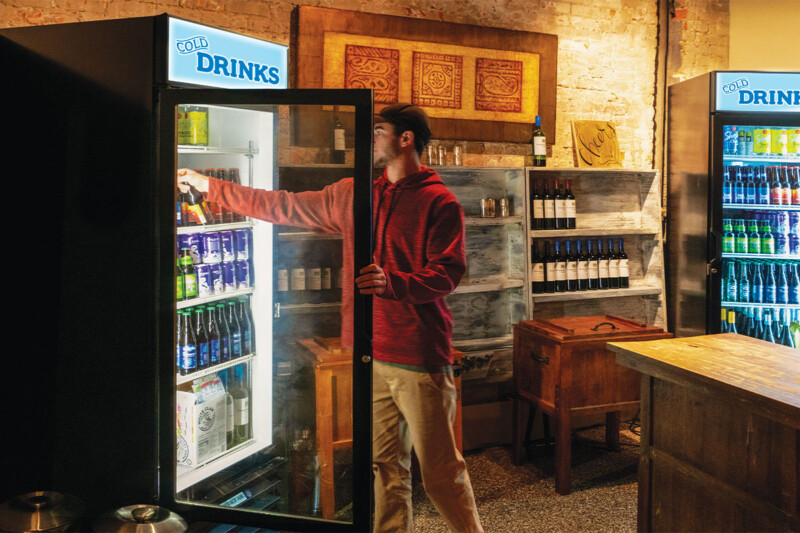Improve Organization, Efficiency With Newer Reach-Ins
Manufacturers step up productivity, energy consumption and more while keeping pace with regulatory demands.
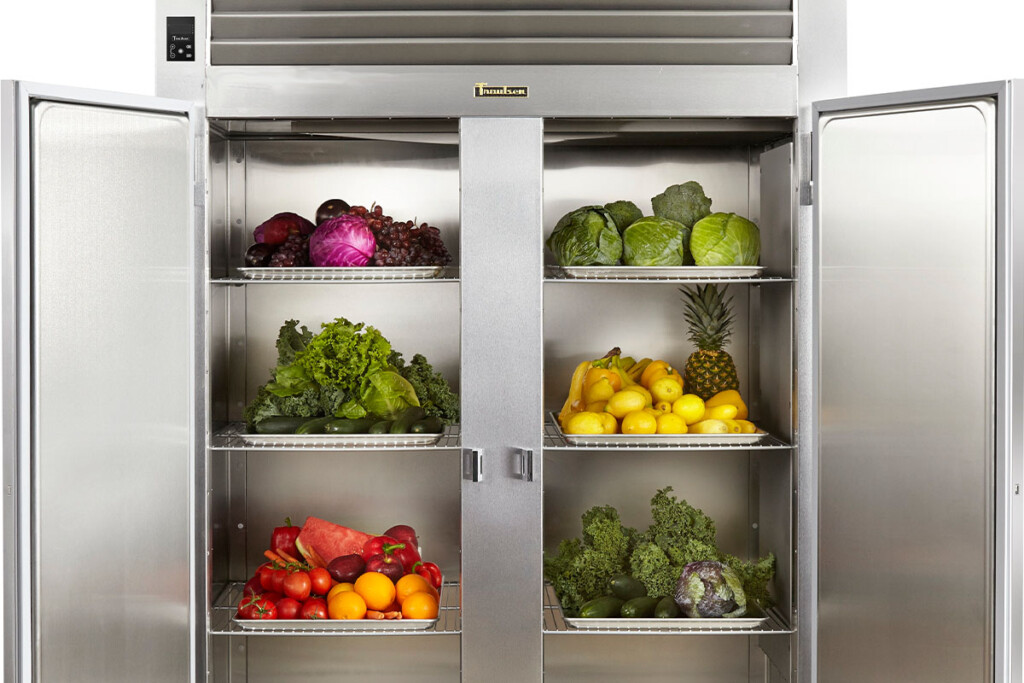
If you think reach-in refrigerators are just a big box with one purpose, it’s time to think again.
When specified properly, reach-ins not only improve storage capabilities within a kitchen, but also bring added workplace efficiencies and flexibility to improve productivity in an operation. Further, new models boast improved energy efficiency, unlocking bottom line savings.
Here’s a look at some of the new features that can help improve your operations.
Reaching Beyond Refrigerants
For years, manufacturers of reach-ins have been aware of upcoming changes from the Environmental Protection Agency, and have been working on reengineering refrigeration systems to meet those standards. The most recent iteration of Energy Star specifications with more strict guidelines for maximum daily energy consumption which took effect at the end of 2022 expanded the equipment scope to include reach-ins. And in January of this year, the EPA’s regulations banning high global warming potential refrigerants in reach-ins took effect.
To comply with the EPA’s ban on HFCs, most reach-ins now use R-290, which is better for the environment because it does not contribute to ozone depletion; it’s also more energy efficient. The refrigerant-grade propane conducts heat more efficiently than other refrigerants, meaning less refrigerant is needed. It also can operate at lower compressor pressures, thereby using less energy to run a reach-in.
While reengineering for R-290, several manufacturers made other changes that improve the energy efficiency of reach-ins. Recent developments include:
• Variable speed compressors. Some manufacturers have implemented this type of compressor, which allows the refrigeration system to adjust throughout the day, running at a lower speed when demand isn’t as high.
• Thermostatic expansion valves. This is another way reach-ins adjust to demand. The TXV you find on some lines of reach-ins regulates the amount of coolant that flows to the evaporator based on the temperature, to maintain optimal cooling.
• Adaptive defrost technology. This feature can be found in a couple different reach-in lines. Sensors on the coil measure ice buildup so the defrost cycle runs only when necessary.
• Improved airflow through the coils. Airflow through the refrigeration system is critical to efficiency. Coils clogged with dirt and debris get hot, causing the compressor to run more often and sometimes resulting in a service call. One manufacturer changed the design of the coils, removing the narrow fins. This allows air to flow through the coils even when they’re dirty.
• More efficient airflow in the cabinet. It’s not just airflow through the refrigeration system that’s important. Keeping air moving through the cabinet is critical to maintaining even temperatures in and around all the food, no matter how tightly it’s packed in. Ducts, louvres and ribbing along the sides of the interior cabinet are some ways manufacturers have designed the interior to help move air. One manufacturer includes an air distribution system down the sides of the walls to ensure even airflow.
• Temperature-regulating software. Many reach-ins have electronic temperature controls that sound an alarm if the unit gets above a certain temperature. But one manufacturer has improved on that with a software that monitors humidity and usage along with temperatures. This data enables it to predict usage and control compressor speed and defrost cycles. Operators also can use the data to see how long a reach-in was down during a power outage, to help determine food loss.
Flexing Flexibility
The energy-efficient features being implemented in refrigeration systems have allowed manufacturers to create slimmer models without sacrificing storage capacity, thanks to less-bulky insulation. And by knocking a few inches off the standard size, smaller reach-ins bring additional flexibility to operators, while optimizing the valuable square footage of a kitchen. Some of the benefits of a slim design include the ability to roll the reach-in to more places, especially for single-door units. It can serve as storage in the back of the kitchen, a holding place for prepped items on the cookline, and it can even be rolled through doorways to the front-of-house for keeping to-go orders properly chilled.
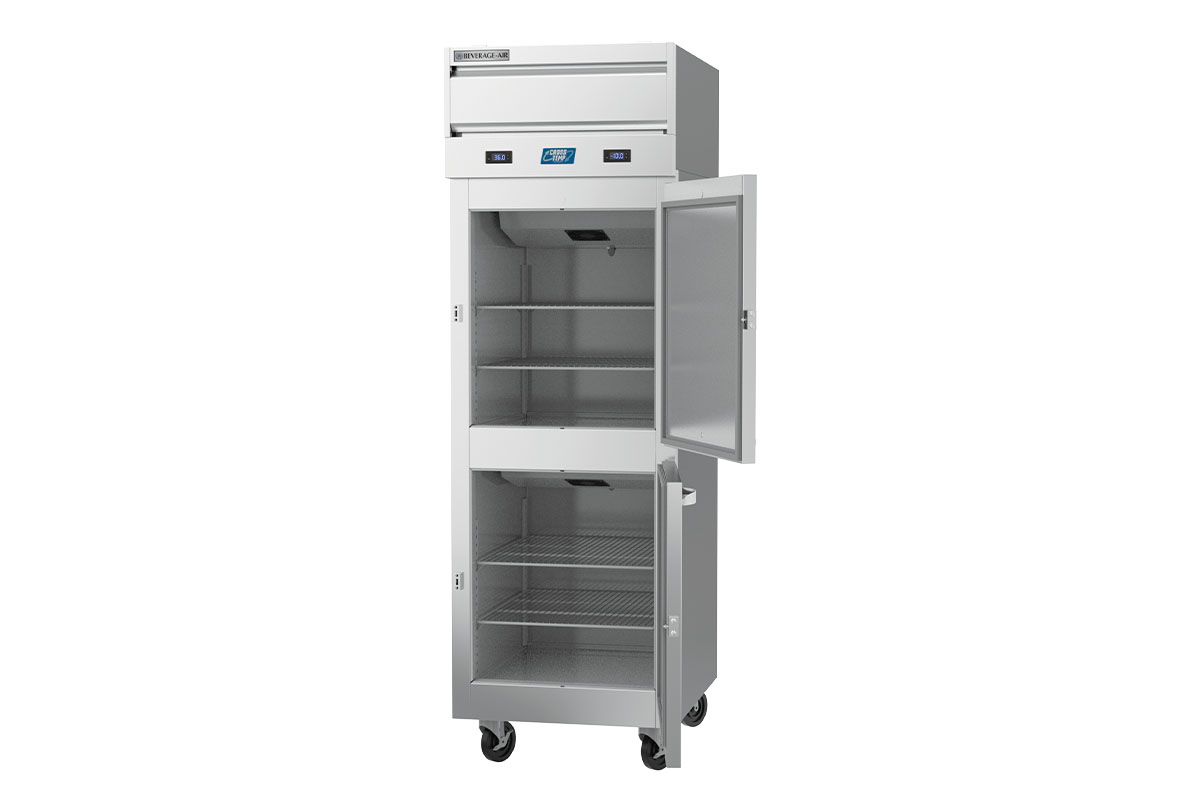
Some units can serve as freezers or fridges. Courtesy of Beverage-Air.
Slimmer models are helpful with two- and three-section reach-ins as well. “We’ve noticed a demand for smaller equipment as space becomes a premium throughout the industry,” says one manufacturer. “With a slim design, you can still reap the benefits of three different sections for storage, prepped product and backup, without using as much valuable kitchen space.”
Another space-saving feature is the covered top-mount compressor system. This was designed after seeing one incident after another of staff using the top of a reach-in for storage, blocking needed airflow. By designing an opening on the side for air to flow through, the manufacturer was able to cover the top, creating usable storage space for operators.
Improved flexibility also comes in the form of greater temperature capabilities. One manufacturer has introduced a reach-in refrigerator with two separate sections, each with the ability to be programmed at temperatures ranging from -15°F to 40°F. This allows operators to seamlessly switch between refrigeration and freezing as demand shifts, whether from fluctuating inventory needs or menu changes, or to make more efficient use of kitchen space.
What To Consider Before the Big Purchase
The variations within the reach-in category are so numerable it can be overwhelming. Not only are there slim, regular and wide models, but you also have to decide whether to get one, two or three sections. And within that, you can choose between glass-door or solid-door styles or a combination of the two. Knowing your own operation is the key to making the right decision.
First think about your space. Do you have a walk-in refrigerator for bulk storage? If so, you will primarily be using the reach-ins on the cookline, which means you probably need a one-section model. Some operators prefer glass doors on the cookline, because it makes it easier for staff to see what’s prepped and ready with just a quick glance. A half-glass, half-solid door is a nice option for places where the cookline reach-in is used partly for storage and partly for prepped items.
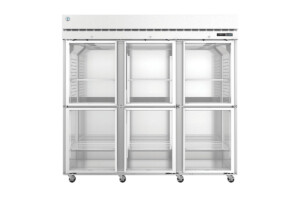
Clear doors add visibility, helping staff find items. Courtesy of Hoshizaki.
You also will need to think of your menu, including the type of food and number of meals served. Sizing the reach-in to your storage capacity needs ensures you have enough space without overdoing it and running up energy costs. Knowing the traffic volume also will play a role in helping decide which features to include. High-traffic kitchens might opt for reach-ins with the TXV, variable speed compressors or the software that adapts to usage patterns to save energy amid frequent opening and closing.
Finally, think about overall organization and where your reach-in will be used. Rather than just stacking product on top of each other until the reach-in is full, trays, shelves and drawers can be customized for each unit. For example, drawers are great as dough bins, shelves can help organize prepped product so it’s easily accessed on the cookline, and trays help speed things up when you’re sliding large batches of product in and out during the day.
As operators demand more flexibility, makers of reach-ins are rising to the challenge. The new sizes and smart features help meet operators’ needs, even as they change from day to day.
Triple Threat
Makers share three common pitfalls to avoid when specifying a reach-in.
1. Not measuring your space correctly. It’s important to leave enough room around both the sides and top of reach-ins to provide optimal airflow. One model with a top-mounted refrigeration system, for example, suggests 12 inches of clearance up top; another also requires 3 inches on the sides and rear.
2. Not considering hinge positioning. Some reach-ins can be rehinged on-site, but not all. Make sure you’ve specified the door to open the best way for proper productivity on the cookline.
3. Thinking only about purchase price. Do your research into energy efficiency, potential state and local rebates, and warranties, as all of these can affect the product’s lifetime costs.

Consider hinge positioning in specification. Courtesy of Continental.
Take Inventory
Scan features of eight makers’ newest reach-ins, all of which use R-290 refrigerant.
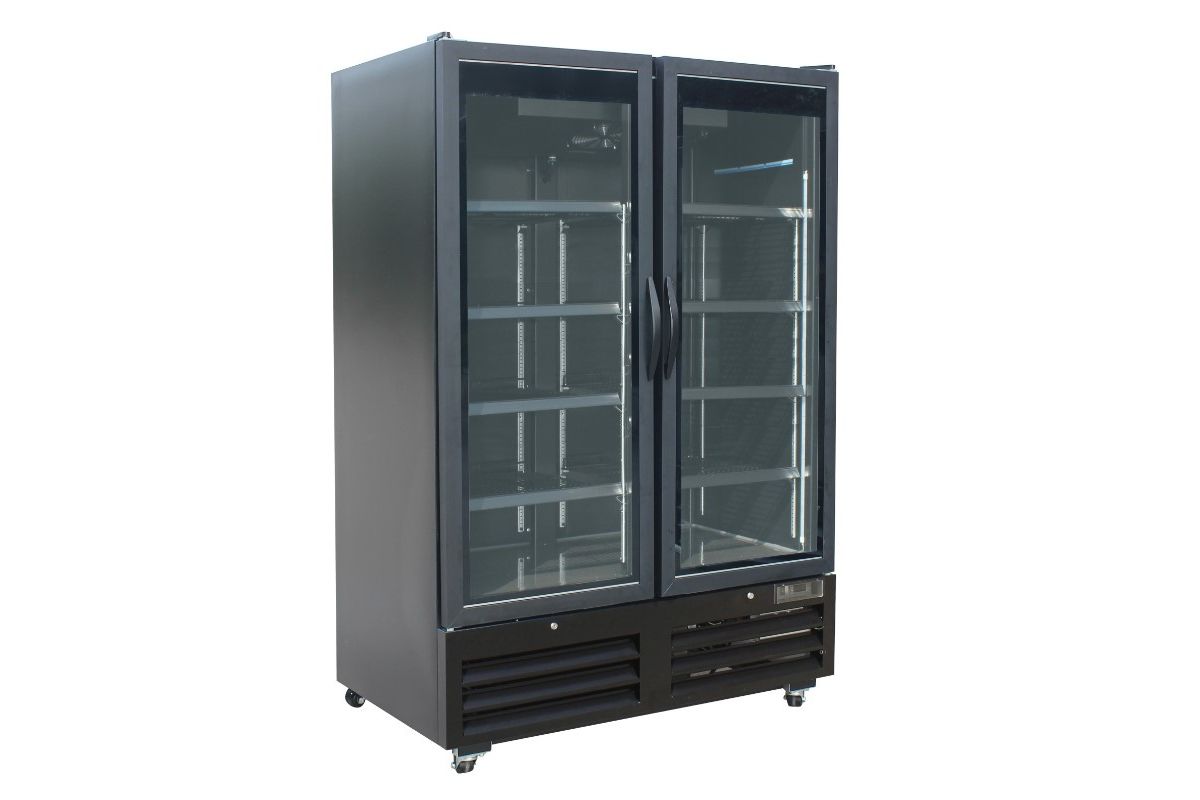
Kool-It
Model: KGF-52
Dimensions: 52 5⁄8-in.W x 33 3⁄4-in.D x 77 3⁄4-in.H
Features: Tempered glass doors aid in product visibility, while the interior can store full-size sheet pans. Forced air movement and high-efficiency evaporators help maintain cabinet temperatures.
Website: mvpgroupcorp.com
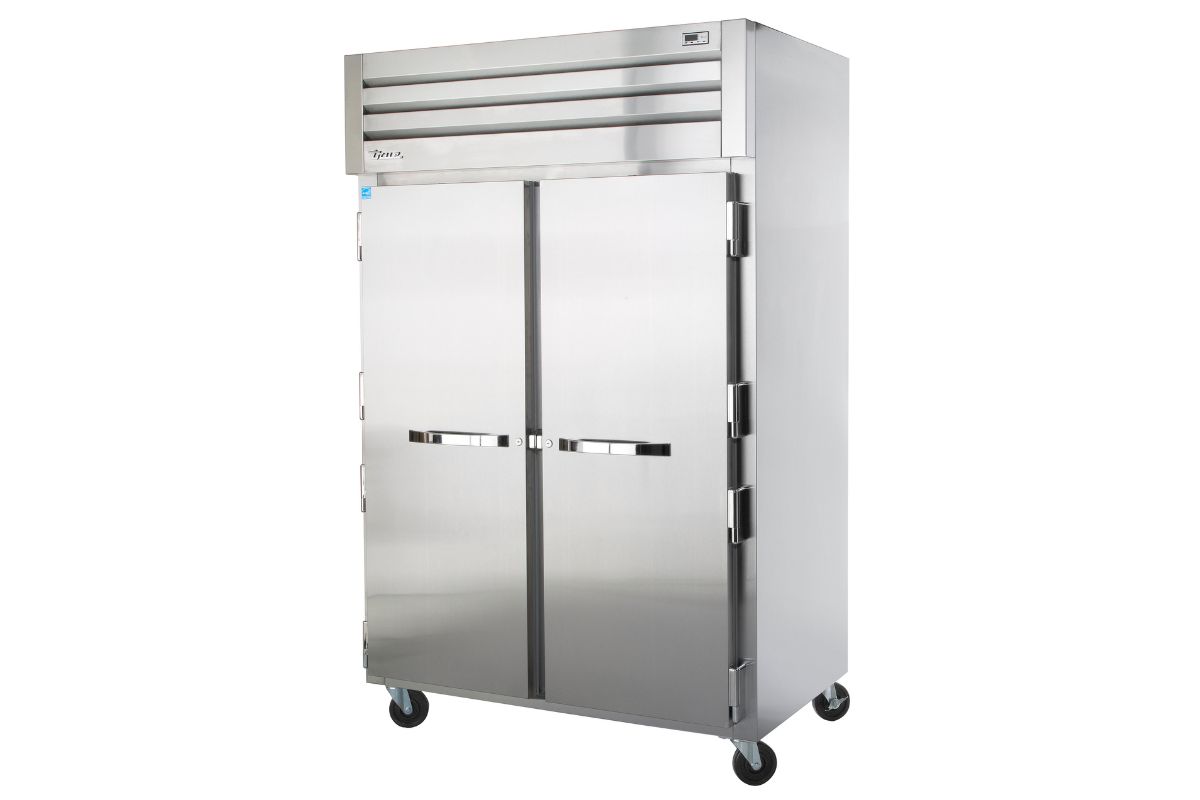
True Mfg.
Model: STR2R-2S
Dimensions: 52 5⁄8-in.W x 33 3⁄4-in.D x 77 3⁄4-in.H
Features: The top-mounted refrigeration system with evaporator is positioned outside of the food zone, helping maximize capacity. Foamed-in-place polyurethane insulation, magnetic door gaskets and an exterior temperature display round out the unit.
Website: truemfg.com
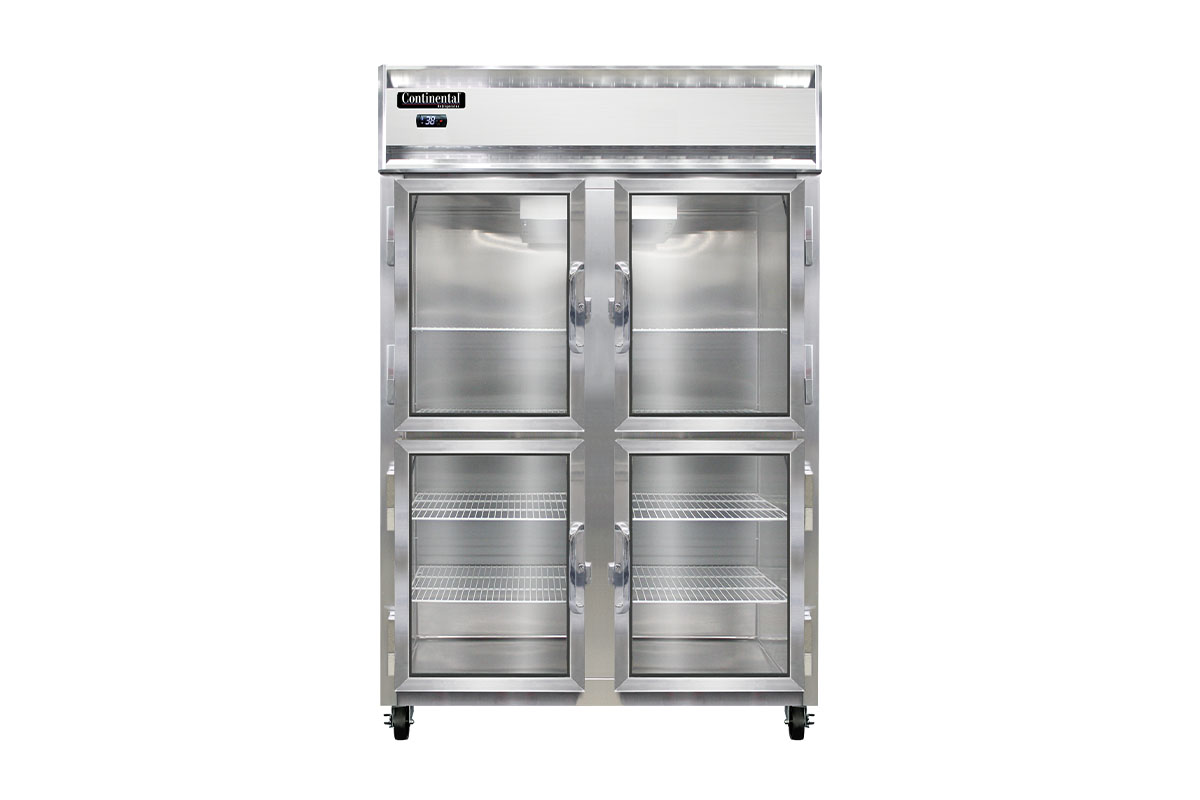
Continental
Model: 2RNGDHD
Dimensions: 52-in.W x 35 3⁄8-in.D x 82 1⁄4-in.H
Features: Triple-pane glass doors ensure visibility across all eight shelves on this Energy Star certified unit. Digital controls show unit temperature.
Website: continentalrefrigerator.com
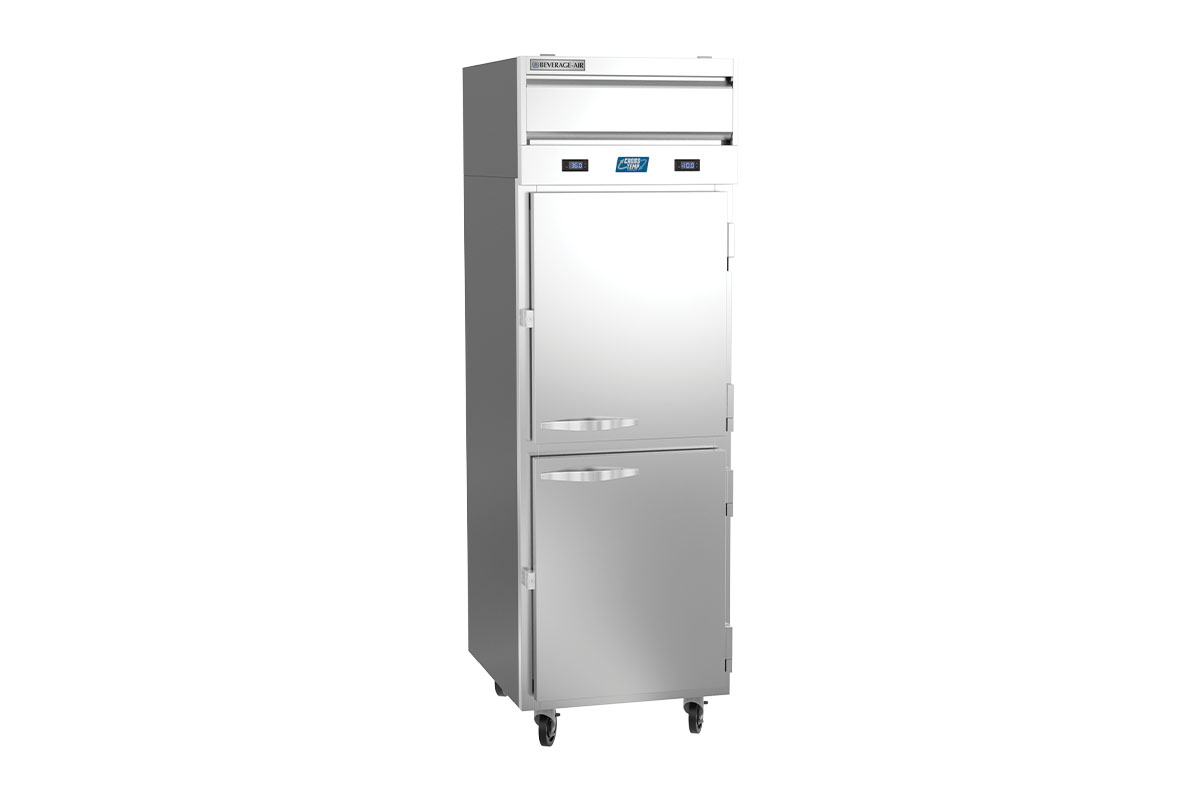
Beverage-Air
Model: CT12-12HC-1HS
Dimensions: 26 1⁄2-in.W x 34 7⁄8-in.D x 84 1⁄8-in.H
Features: A top-mounted, variable speed compressor as well as adaptive defrost add efficiency to this four-shelf unit. Use digital controls to adjust cabinets between -15°F to 40°F.
Website: beverage-air.com
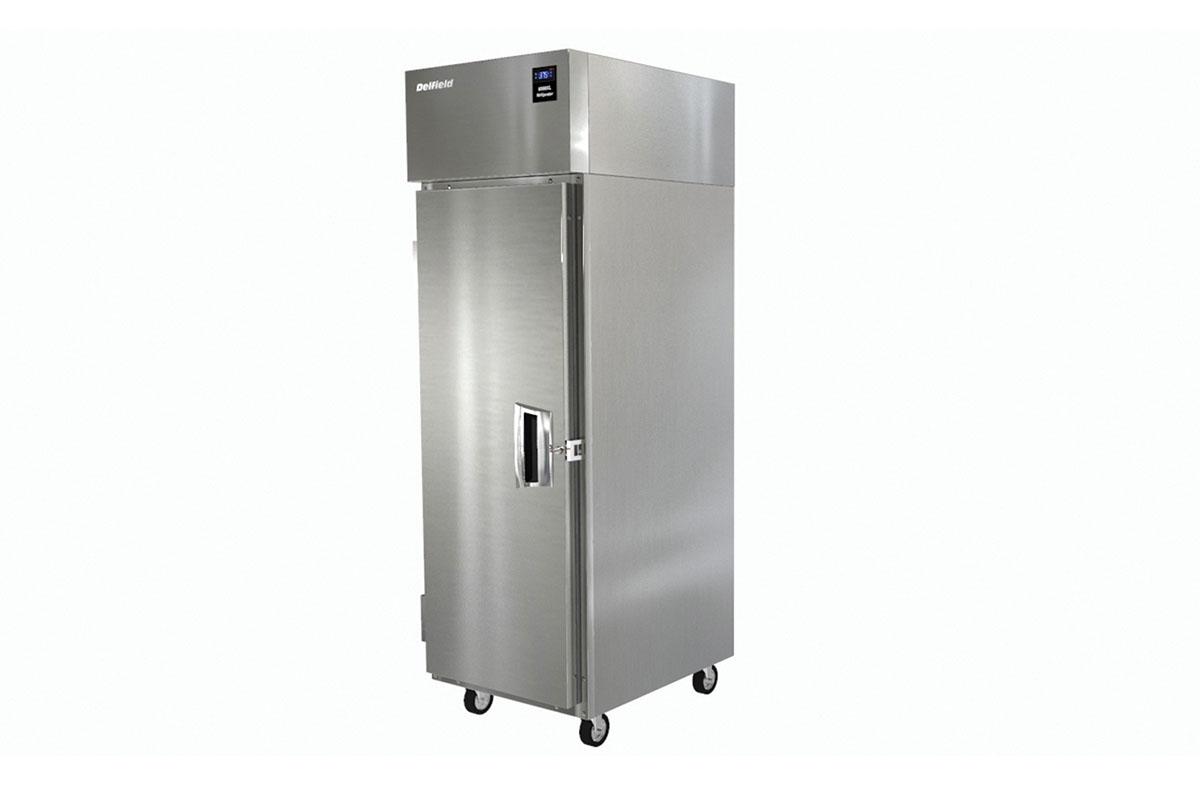
Delfield
Model: 6025XL-S
Dimensions: 25 1⁄2-in.W x 32 3⁄8-in.D x 79 5⁄8-in.H
Features: Adaptive defrost keeps the evaporator coil ice-free, while refrigerant use is driven by a TXV.
Website: delfield.com

Hoshizaki
Model: R2A-FSN
Dimensions: 52 5⁄8-in.W x 33 1⁄2-in.D x 79 1⁄2-in.H
Features: A ducted air distribution system and TXV drive efficiency on this unit, which is 3 inches slimmer than a sister model.
Website: hoshizakiamerica.com
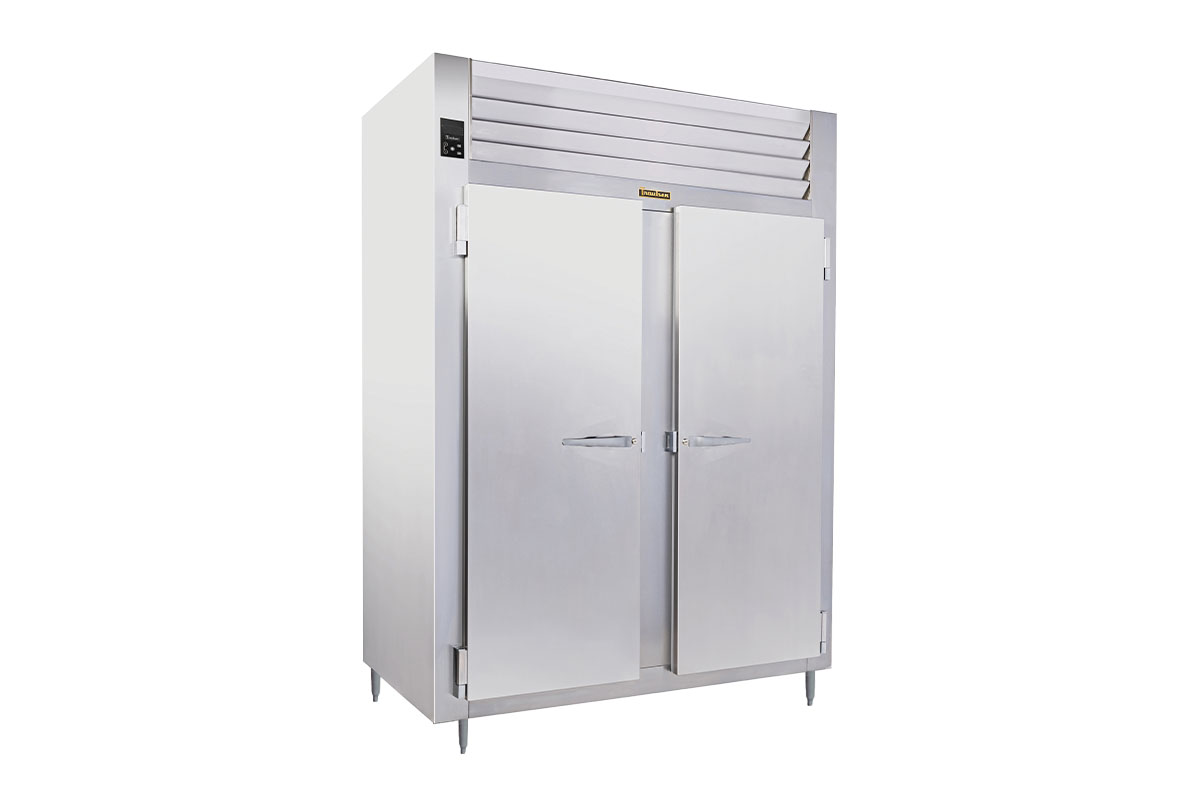
Traulsen
Model: RHT232WUT-FHS
Dimensions: 58-in.W x 35 1⁄8-in.D x 83 7⁄16-in.H
Features: A redesigned refrigeration system is complemented by humidity-monitoring software and TXV metering. Clockwise airflow in the cabinet adds efficiency.
Website: traulsen.com
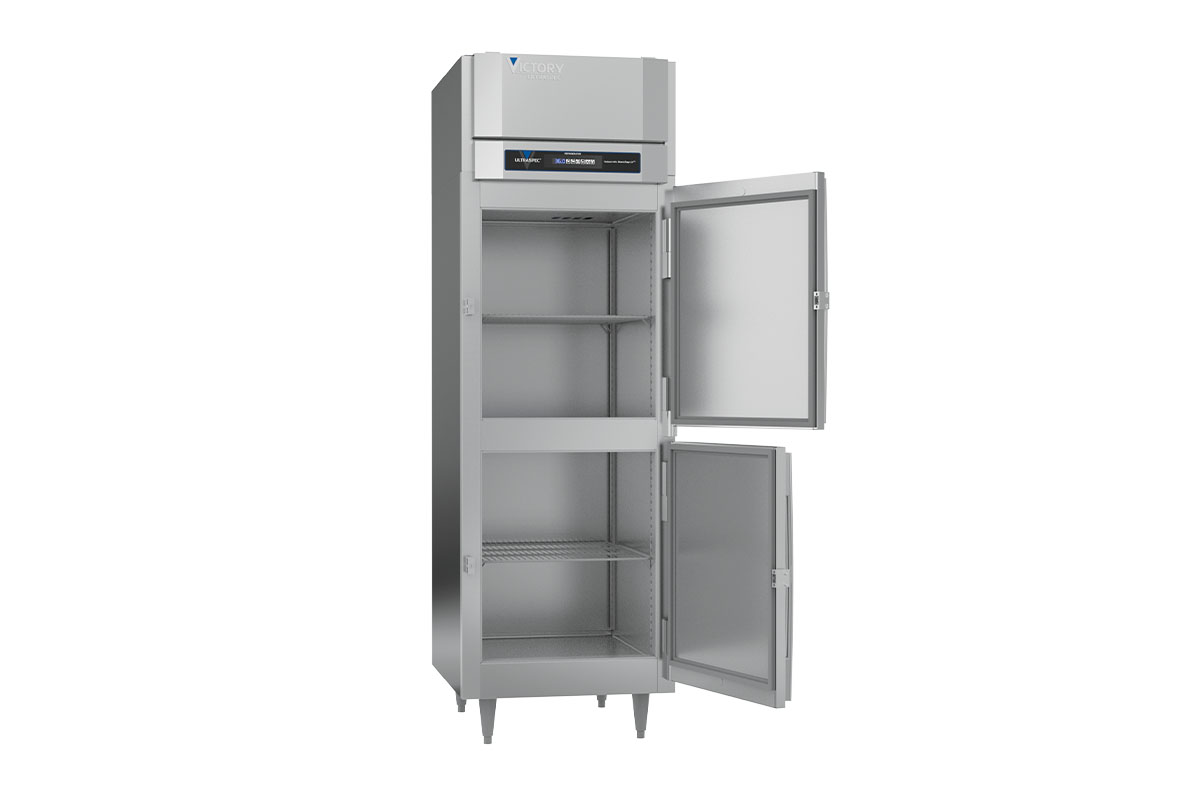
Victory
Model: RS-1D-S1-HD-HC
Dimensions: 26 1⁄2-in.W x 34 7⁄8-in.D x 84 1⁄8-in.H*
Features: A variable speed compressor, TXV, adaptive defrost and circulatory airflow aid in this unit’s claim as 35% more efficient, compared to a competitor’s unit using 7.2 kWh per day.
Website: victoryrefrigeration.com
*All dimensions include handles and casters/legs, where applicable.
RELATED CONTENT
- Advertisement -
- Advertisement -
- Advertisement -
TRENDING NOW
- Advertisement -
- Advertisement -
- Advertisement -


